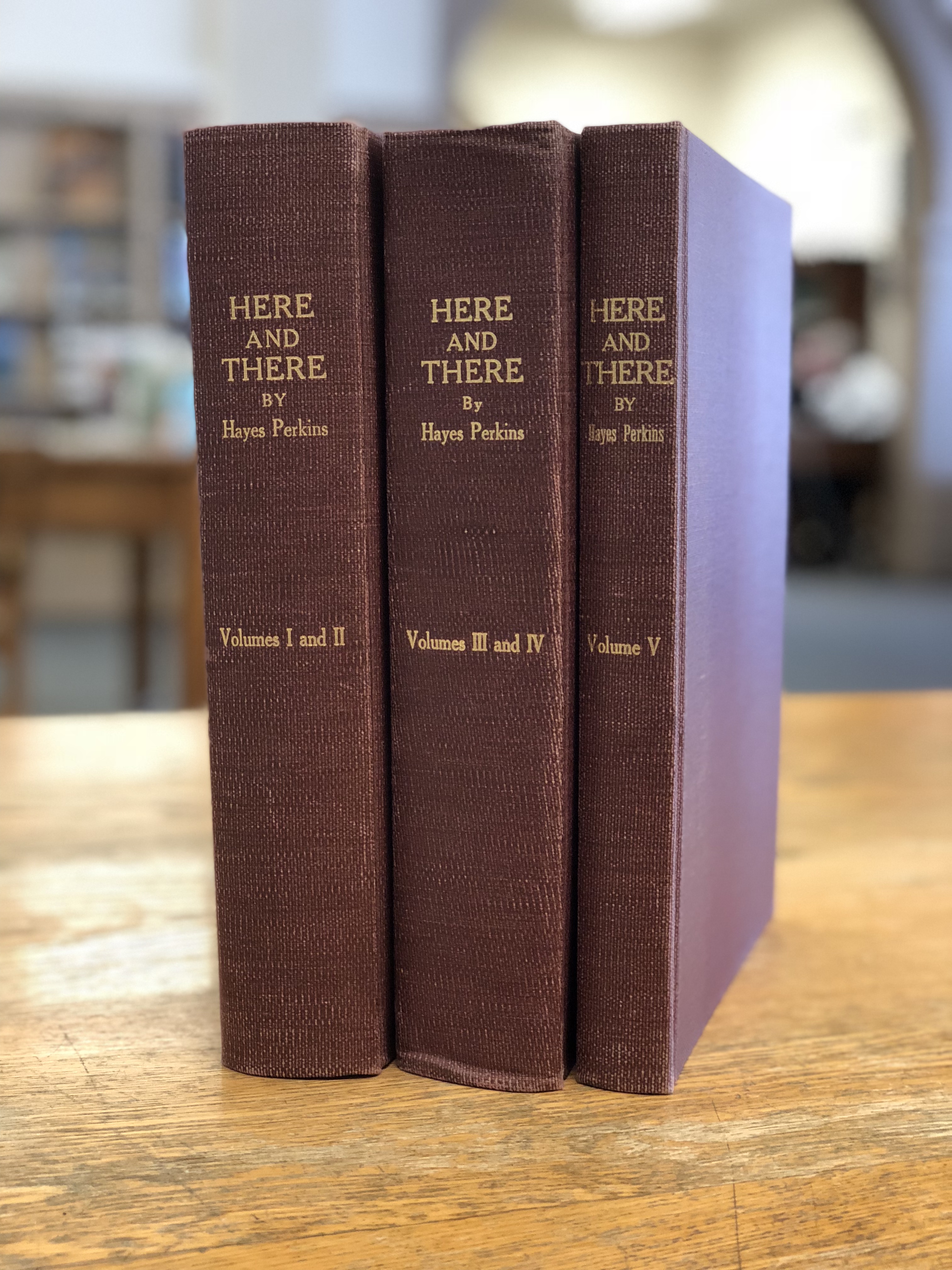David Laws (September 14, 2018)
Hayes Perkins who single-handedly created Perkins Park, a waterfront garden in Pacific Grove, California that became internationally famous in the 1960s, worked his way around the world eight times as a manual laborer before settling in the city in 1938. On leaving home at age 15, he had hopped freight trains and worked in fields, mills, mines, plantations, and ranches across the country before setting off to explore the globe by crewing on sailing ships, mining for diamonds in the Congo, and logging the forests of New Guinea for more than 45 years.
Unusually for someone of his humble origins, he was an avid reader and kept a detailed diary of his travels. A friend, Frank Preston of Butler, Pennsylvania, arranged for them to be typed in 1961. Five carbon paper copies of over 2,000 pages each were hard-cover bound into three tomes under the title Here and There. One set is held by the Royal Geographical Society, London. Perkins gave his to the Pacific Grove Public Library in 1962

Perkins’s longest assignments were on William Randolph Hearst’s properties in California. He worked on the construction of both Hearst Castle and the family compound, Wyntoon, near Dunsmuir in the early 1930s. At both locations he came into frequent contact with Hearst, his employees, and the constant stream of visitors from the worlds of politics, business, and entertainment, particularly Hollywood.
His diary entries at this time become more autobiographical in style. They offer unique insights from the perspective of an hourly laborer into the people, politics, and setting of the extraordinary world being created on "La Cuesta Encantada" (The Enchanted Hill). Although he abhorred Hearst’s infatuation with fascist dictators, particularly Mussolini, Perkins describes him as a fair, even a benevolent, employer. However, Perkins spares no kind words for the legions of sycophants and corrupt managers who ruled the roost in Hearst’s absence. He even faults architect Miss [Julia] Morgan for favoring a loud-mouthed foreman over others who were more competent. His descriptions of the debauchery of visiting Hollywood figures and their ravishing of young women invited to party on the hill make Harvey Weinstein look like an amateur. A non-drinker, he was especially troubled by late-night beach landings to replenish the castle liquor cellars during Prohibition. The Coast Guard ignored his whistle blowing for fear of reprisal by Hearst.
I came across Mr. Perkins while trying to understand why the City of Pacific Grove had allowed it’s most unique and universally admired civic asset, Perkins Park, to fall into such disarray. On researching his life and work, I decided that it would make an interesting topic for Eden, Journal of the California Garden & Landscape History Society.
I discovered that Frank Preston’s copy of Here and There, together with hundreds of pages of correspondence, had been donated to the Special Collections and Archives at Cal Poly, San Luis Obispo. Among the many letters between Preston and Perkins, I came across one dated April, 1st 1963 from Preston that asked “I wish you to go to the library and get your diary and cut out the three pages of the “Forward” which I wrote and send it to me.” Noting the date, at first, I wondered if this request was intended as a joke. But apparently not. Preston had been advised by his attorney that much of the content in the book about people could be considered libelous and he might be subject to lawsuits because of his involvement with the publication. He even asked Perkins to remove the name of the book binder so he could not be tracked down that way. Filed together with the letter were the three pages that Perkins had removed from the library and returned as requested.
On my return, I met with Pacific Grove Library director Scott Bauer. We looked at the library copy of Here and There (it is bound into three fat tomes and is kept locked in the reference section) and sure enough the location where the pages had been removed showed ragged edges of torn paper. Scott was pleased to see copies of the three pages that had been missing for 55 years returned to their original home.
Reprinted from the Cedar Street Times, September 14, 2018 page 8




